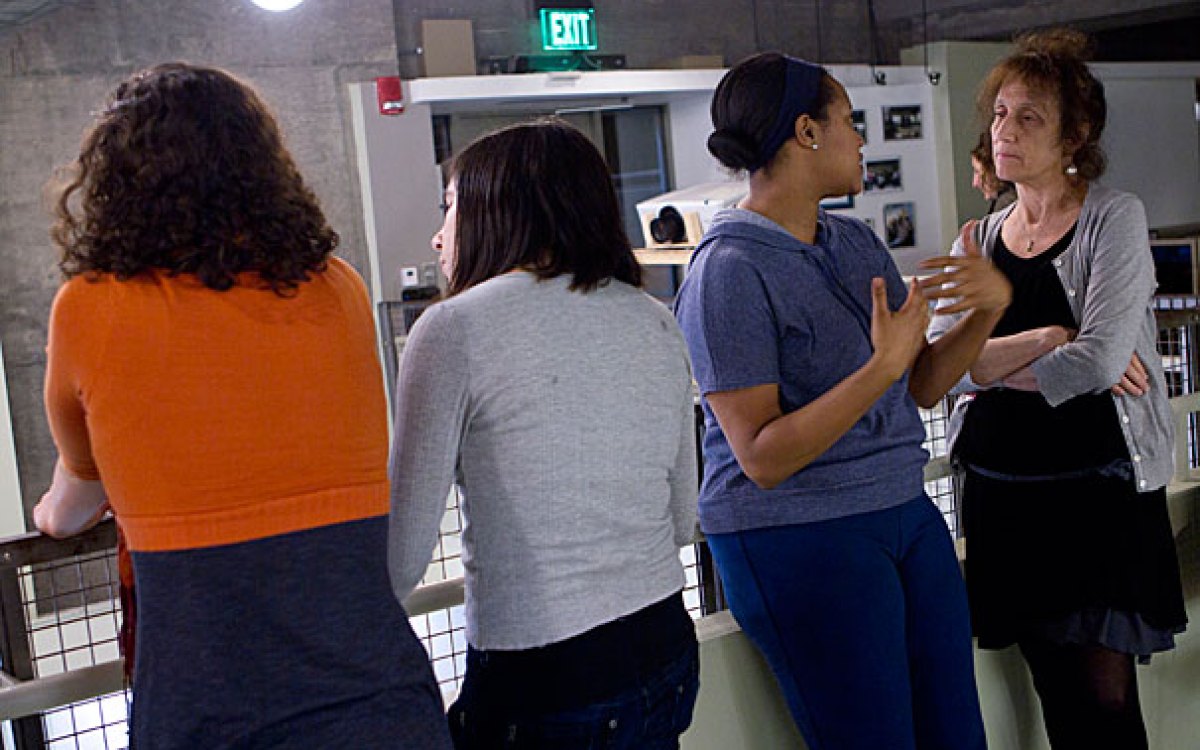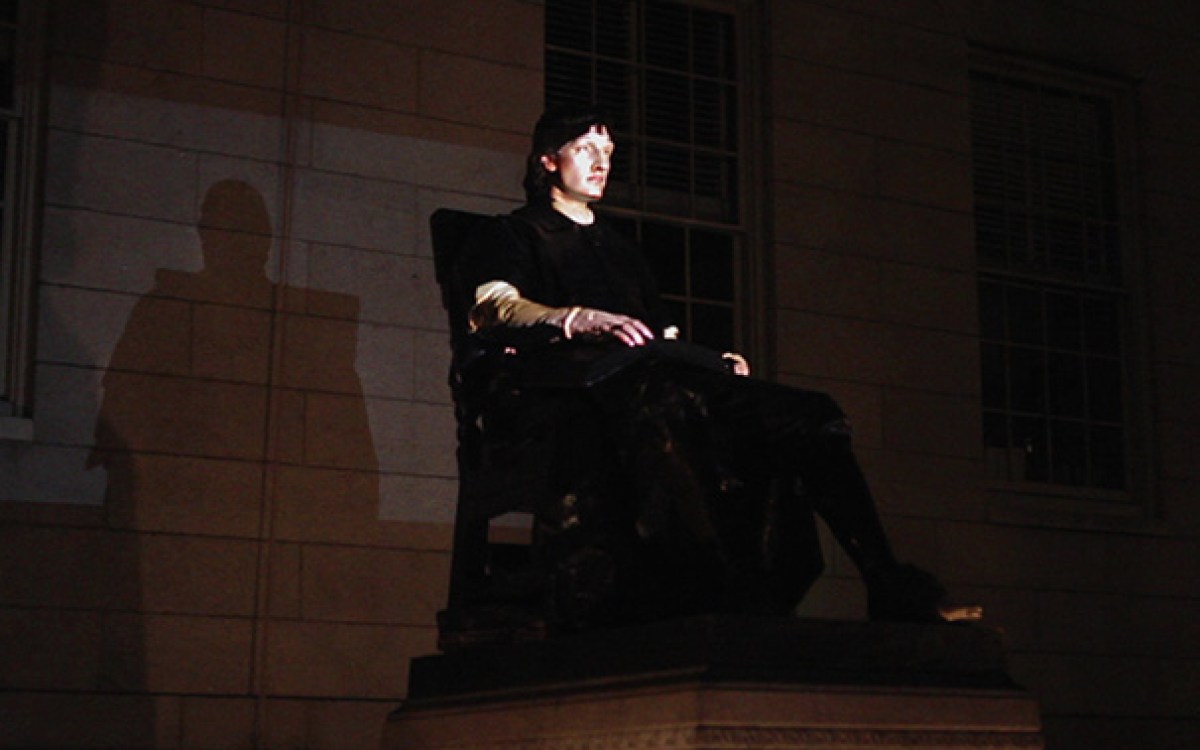A luminous vision for Harvard Yard
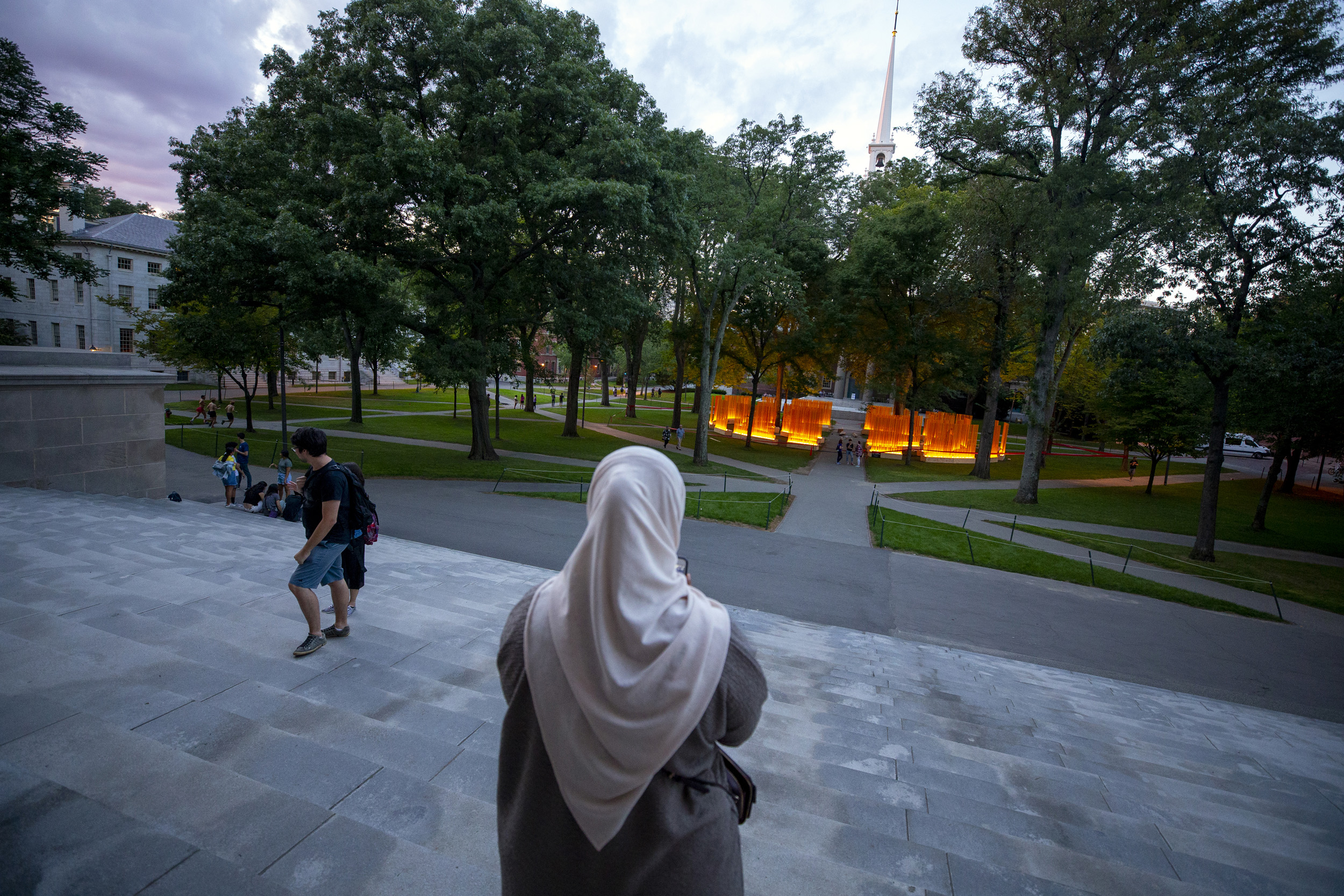
From the steps of Widener Library, a woman photographs “Autumn (… Nothing Personal),” a public sculpture by artist Teresita Fernández recently installed in Harvard Yard at Tercentenary Theatre.
Rose Lincoln/Harvard Staff Photographer
Teresita Fernández’s James Baldwin-inspired installation reacts to its surroundings
On a recent afternoon, the artist Teresita Fernández sat in the center of her latest creation, admiring the view. The sun dipped, sending rays through the thousands of orange-and-yellow-pinstriped tubes that form her Tercentenary Theatre installation, “Autumn (… Nothing Personal).” Soon the work was glowing.
As passersby slipped in and out of the frame, Fernández remarked on the work’s cinematic effect, in which “anything moving appears and disappears … as if each one of these tubes is almost like a shutter that opens and closes.” When a breeze rustled the 10-foot-high tubes, which rise from plywood benches arranged in concentric circles, the sound reminded her of “a bamboo forest.”
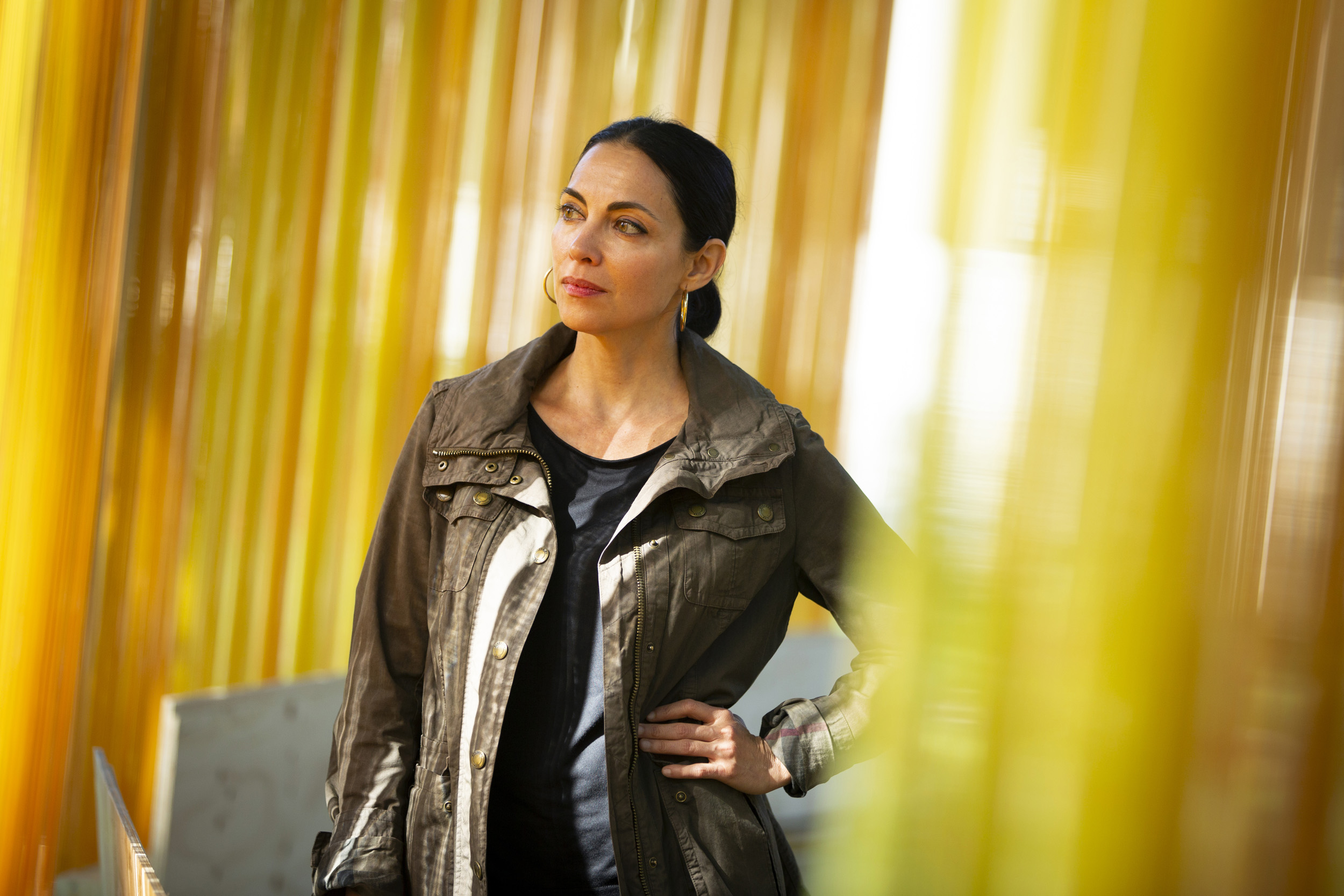
“This piece behaves in a certain way,” said Fernández of the installation, which was commissioned by the Harvard University Committee on the Arts (HUCA) and inspired by the change of seasons, the site’s storied history and imposing facades, and the 1964 James Baldwin essay “Nothing Personal.”
“It’s constantly changing,” the artist added.
Both change and light manifest as visible presences and invisible inspirations in “Autumn (… Nothing Personal),” installed between Memorial Church and Widener Library and on view through Oct. 1. During the day the piece reacts to the shifting sunlight, the shadows cast by the canopy of elms and the colors of the season. Embedded lights lend the work an entirely “different tone in its nocturnal hours.” Organizers hope planned performances and discussions in the space, many focused around Baldwin’s work, will further animate the installation.
Fernández’s entry point for the piece was Baldwin’s essay, a biting commentary on the violence he observed and experienced as an African-American living through the Civil Rights era. But Baldwin’s writing, she points out, also embraced change, and hope.
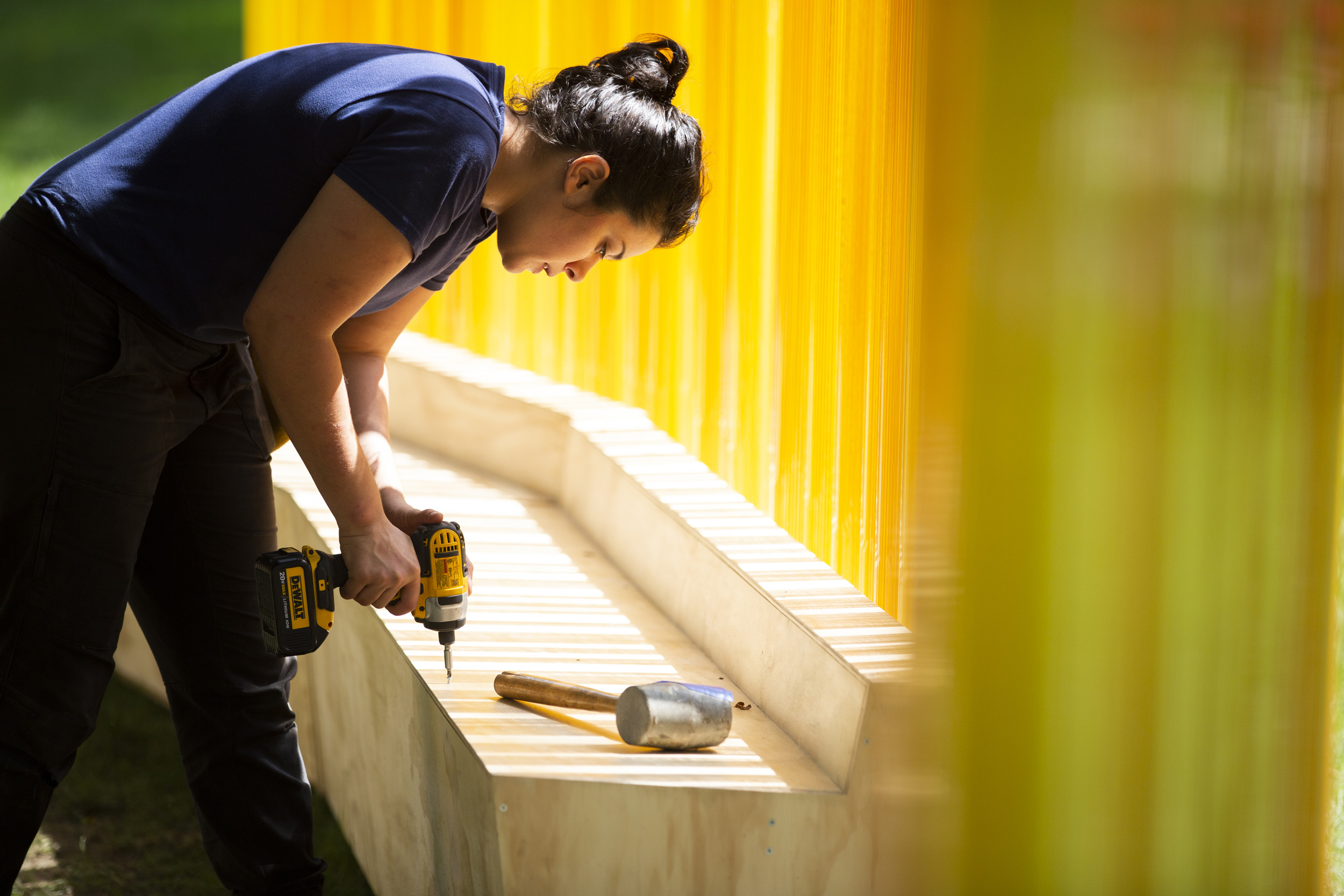
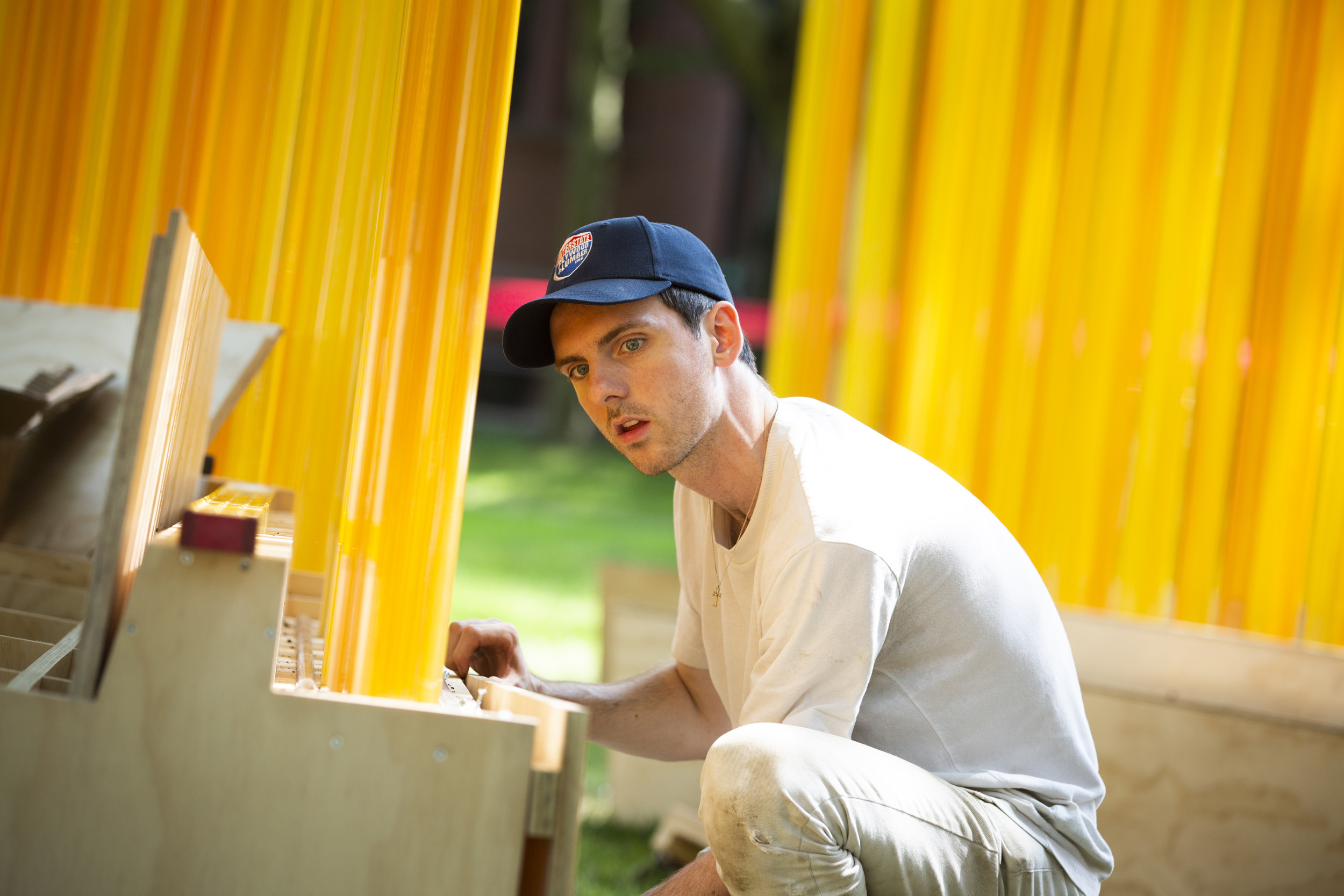
Natalie Haddad and Billy Hilsee work to construct the installation over the weekend before its opening.
Stephanie Mitchell/Harvard Staff Photographer
“For nothing is fixed, forever and forever and forever, it is not fixed; the earth is always shifting, the light is always changing, the sea does not cease to grind down rock,” Baldwin wrote in his essay, which appeared just months after the passage of the Civil Rights Act of 1964.
“Generations do not cease to be born,” the essay continues, “and we are responsible to them because we are the only witnesses they have.”
If Fernández, a 2005 MacArthur Fellow, draws inspiration from the natural world, her work is also layered with deep social meaning. In a series of drawings titled “Small American Fires,” currently on view at the Harvard Art Museums, flaming landscapes refer both to “slash-and-burn techniques and the way that indigenous people have transformed the land and the landscape for millennia” and “contemporary American violence,” Fernández said.
Bringing artists into dialogue with the Harvard community has long been a goal of University administrators. Since the release of an Arts Task Force report in 2008, HUCA has invited artists to campus “for a sustained engagement that can really transform people’s perceptions of the institution and the campus itself,” said Robin Kelsey, arts and humanities dean and co-chair of HUCA.

Natalie Haddad hammers the bases as night falls.
Rose Lincoln/Harvard Staff Photographer
“Harvard Yard is a sacred space with tremendous historical resonance,” Kelsey said, but often that resonance “has been beset with forms of exclusion and discrimination.
“We are living through a moment of reckoning … and Teresita’s installation is perfectly timed to help us with this reckoning, to help us think through issues of inclusion and belonging. Her work encourages, enables, prods us to contend with the troubled dimensions of our history and does so through the beautiful.”
More like this
Conversations with faculty, students, and staff over the past two years helped inform Fernández’s Harvard installation. In 2017, she led the January arts-intensive session “Imagination, Narrative, Democracy: Public Art in Practice.” Earlier this year she hosted a series of student workshops that developed programming for the space.
“The thing that I really took away from all of that is that I was not just making the physical structure,” said Fernández, “I was also creating a kind of underlying social structure and really kind of building an entire context for the work to exist within.”
Fernández and Harvard organizers are hoping to “generate community” through a series of programs linked to the installation, including readings and discussions of Baldwin’s work, musical performances, and a talk by Fernández at the Harvard Art Museums. “I think it’s important for Teresita and for those of us who invited her to come to Harvard that this work offers somethings for everyone” said Kelsey. “To fulfill that promise requires activating the work in many different ways.”
In addition to creating community, Fernández hopes the programs will help foster something else she strives for in her artwork: intimacy.
“That sense of intimacy is what I am hoping will be created, not just by the kind of changing light and the physical structure,” she said, “but by the kinds of things that will happen here.
More like this
“What I hope is that the kind of space that this creates, with people reading the essay out loud and with performances, speaks to some of the same issues that Baldwin is addressing and that that happens in this exposed way. I keep thinking of it as an exposed reading where each individual is very exposed, rather than a private reading which is in the comfort of your own mind.”
On move-in day, Denise Welsh, the proud mother of a first-year from West Boylston, Mass., kicked off her sandals and stretched out on one of the installation’s plywood benches. Later, she relaxed with a few yoga poses on the grass.
“I am glad the artist picked this spot,” said Welsh, eyeing the leaves and impressive trunk of a nearby elm. “It’s going to be beautiful with the fall colors.
“I like to say some people just have a vision,” she continued. “[Fernández] had a beautiful vision.”
The installation will be the setting for “Bliss. This Autumn. Lecturance,” a performance of poetry and music, at 7 p.m. Wednesday.
Fernández will give a talk at the Harvard Art Museums at 6 p.m. on Sept. 20.
This installation was made possible by the support of the Johnson-Kulukundis Family President’s Fund to enhance the arts at Harvard from Maryellie Kulukundis Johnson ’57 and Rupert H. Johnson Jr.


